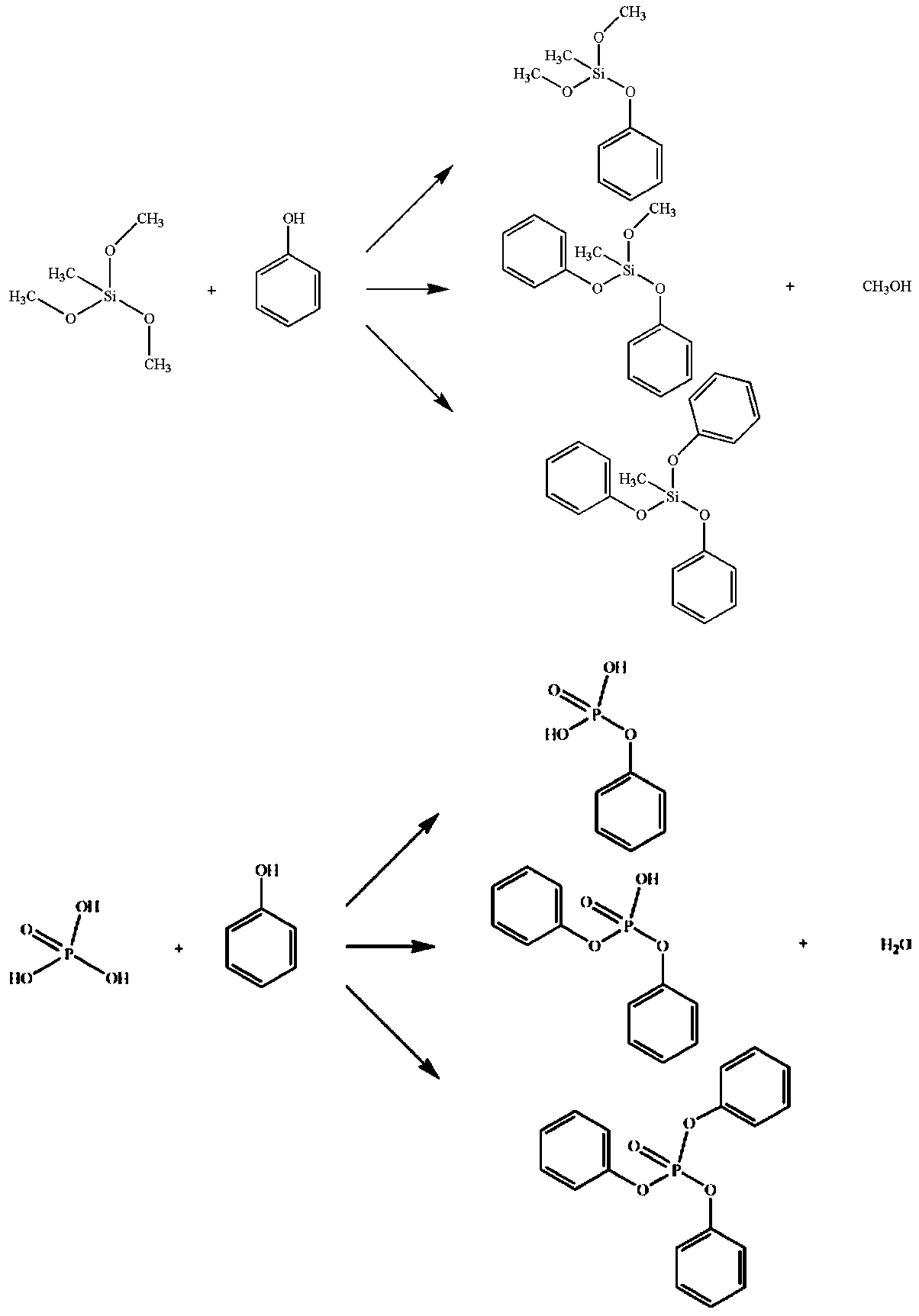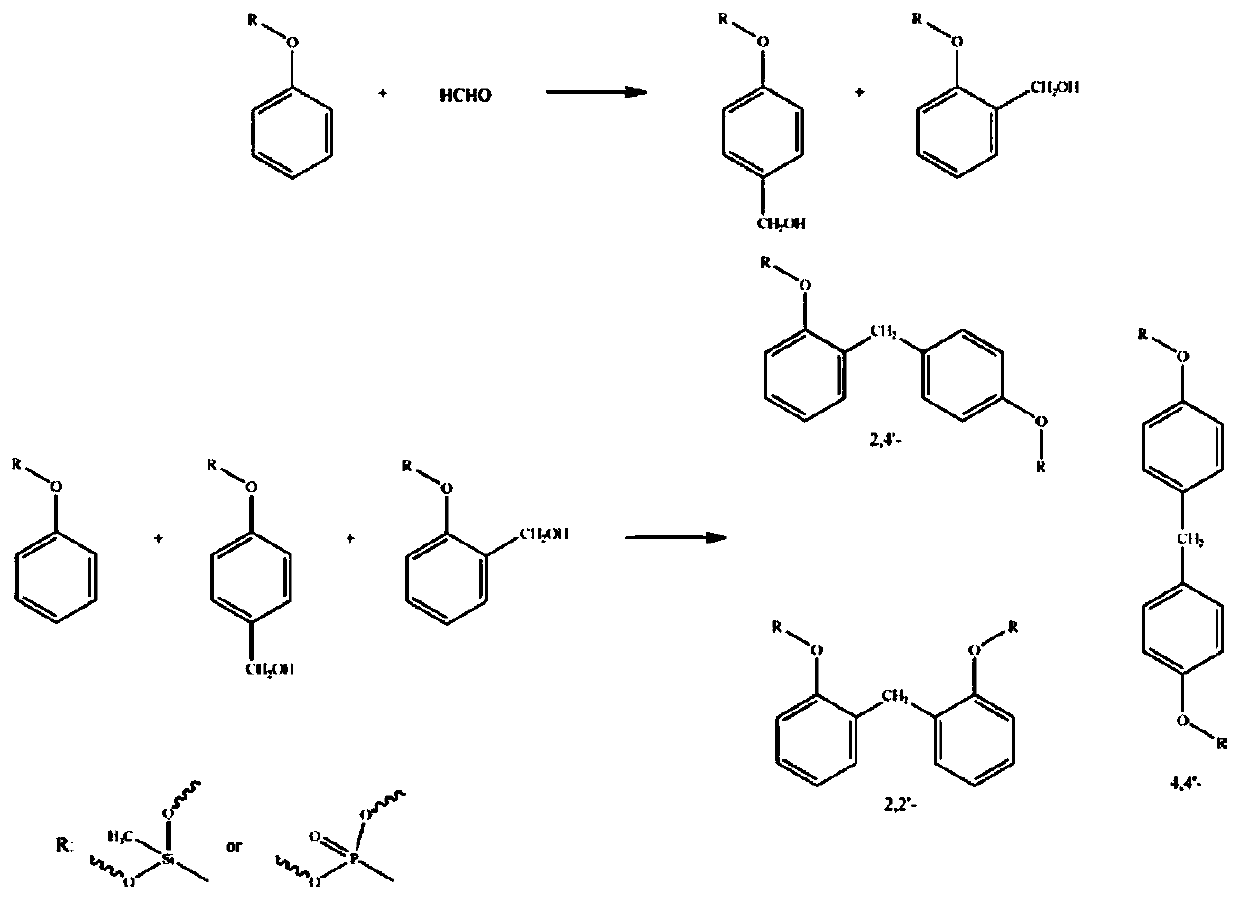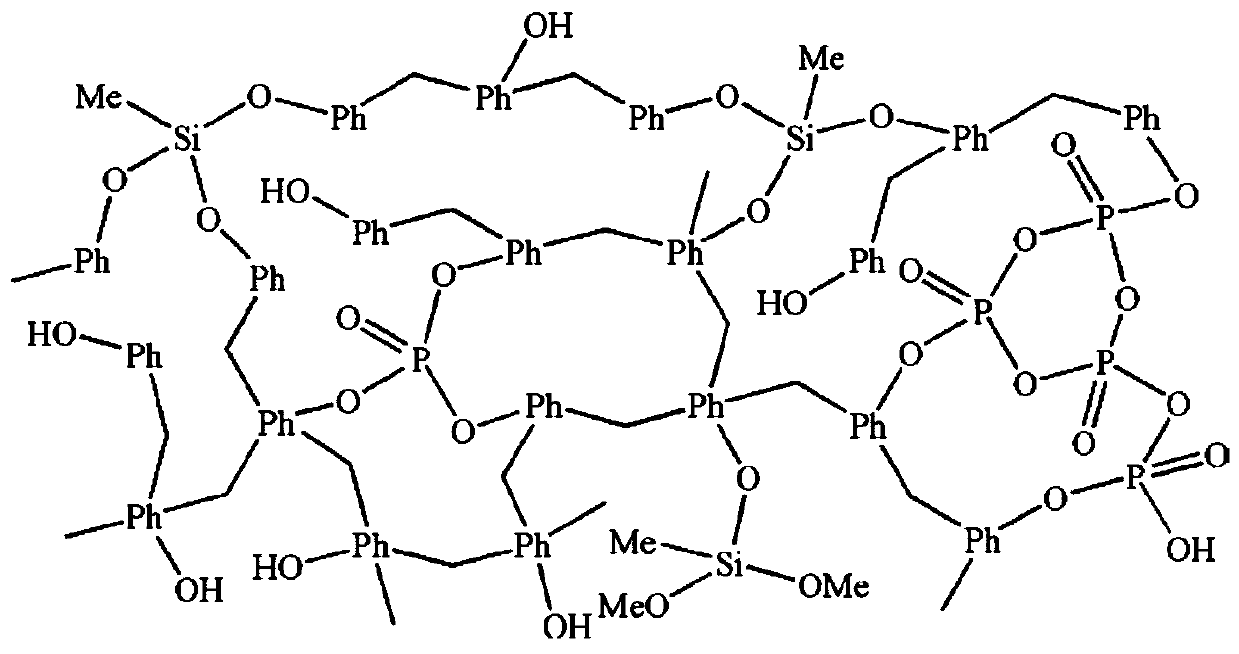Method for preparing phosphorus-silicon double-modified phenolic resin adhesive
A phenolic resin adhesive and modification technology, which is applied in the direction of adhesives, aldehyde/ketone condensation polymer adhesives, adhesive types, etc., can solve the problem of insufficient flame resistance and reaction polymerization degree of new silicon phenolic resin adhesives Difficult to control, difficult to control the reaction process, etc., to achieve the effects of enhanced resin comprehensive performance, increased flame resistance, and increased cross-linking density
- Summary
- Abstract
- Description
- Claims
- Application Information
AI Technical Summary
Problems solved by technology
Method used
Image
Examples
Embodiment 1
[0024] Add 62.88g of phosphoric acid, 116.20g of methyltrimethoxysilane and 228.29g of bisphenol A into the reaction kettle, stir evenly, add 3.44g of p-toluenesulfonic acid, raise the temperature, and react at 175°C to form a compound containing phosphorus atoms or silicon atoms. After that, slowly lower the temperature, add 70.61g of formaldehyde solution, and further react with the intermediate containing phosphorus atoms or silicon atoms at a temperature of 90°C to prepare a phosphorus-silicon double-modified phenolic resin adhesive.
Embodiment 2
[0026] Add 38.79g of phosphoric acid, 68.11g of methyltrimethoxysilane and 94.11g of phenol into the reaction kettle, stir evenly, add 1.88g of methanesulfonic acid, program temperature rise, and react at 150°C to form intermediates containing phosphorus atoms or silicon atoms After that, slowly lower the temperature, add 24.04g of paraformaldehyde, and further react with intermediates containing phosphorus atoms or silicon atoms at a temperature of 85°C to prepare a phosphorus-silicon double-modified phenolic resin adhesive.
Embodiment 3
[0028] Add 25.42g of phosphoric acid, 41.27g of N-(β-aminoethyl)-γ-aminopropylmethyldimethoxysilane and 94.11g of phenol into the reaction kettle, stir evenly, add 1.41g of sulfuric acid, and heat up , react at 160°C to generate an intermediate containing phosphorus or silicon atoms; then slowly lower the temperature, add 26.13g of paraformaldehyde, and further react with the intermediate containing phosphorus or silicon atoms at a temperature of 85°C to obtain a phosphorus silicon Double modified phenolic resin adhesive.
PUM
 Login to View More
Login to View More Abstract
Description
Claims
Application Information
 Login to View More
Login to View More - R&D
- Intellectual Property
- Life Sciences
- Materials
- Tech Scout
- Unparalleled Data Quality
- Higher Quality Content
- 60% Fewer Hallucinations
Browse by: Latest US Patents, China's latest patents, Technical Efficacy Thesaurus, Application Domain, Technology Topic, Popular Technical Reports.
© 2025 PatSnap. All rights reserved.Legal|Privacy policy|Modern Slavery Act Transparency Statement|Sitemap|About US| Contact US: help@patsnap.com



